SPAIN
Plants and Animals

Plants and Animals
Cities in SPAIN
| Barcelona | Benidorm | Bilbao |
| Blanes | Madrid | Nerja |
| Salou | Torremolinos | Valencia |
Popular destinations SPAIN
| Andalusia | Catalonia | Costa blanca |
| Costa brava | Costa del sol | El hierro |
| Formentera | Fuerteventura | Gran canaria |
| Ibiza | La gomera | La palma |
| Lanzarote | Mallorca | Menorca |
| Tenerife |
Plants and Animals
Plants
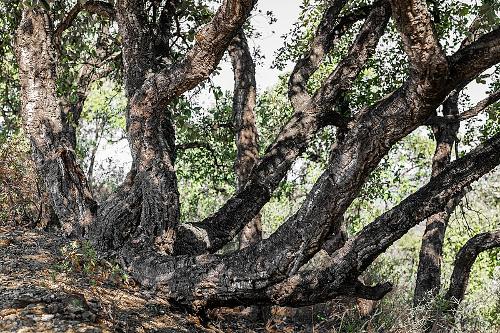 Cork oak SpainPhoto: Unodeaquí CC 4.0 International no changes made
Cork oak SpainPhoto: Unodeaquí CC 4.0 International no changes made
Due to the greater variation in climate, altitude and soil conditions, Spain has a very varied flora with about 8,000 species. Due to the Pyrenees, Spain is relatively isolated from the rest of Europe, resulting in a large number of endemic species.
The Mediterranean flora predominates and the traditional forest formations with holm oaks almost no longer exist and have been replaced by maquis, a fairly low vegetation with rosemary, oleander, lavender, thyme, cork oak, heather broom, Cistus, Spartium and Genista. The main cork oak areas are Catalonia and Extremadura. More to the south the vegetation becomes more subtropical in nature with agaves, prickly pears and palms. The only date palm forest in Europe can be found at Elche in Alicante.
Deciduous forests with oak, beech, chestnuts, ash, poplars and birch trees are mainly found in Northern Spain. The coniferous forests in the high mountains consist mainly of larch and arve, and there are also mosses and lichens here. The silver fir is common in the Pyrenees and the Sistema Ibérico, while the Spanish fir is only found in the Ronda area of Andalusia. The Scottish pine with its mottled red bark is common in the cool northern mountain regions. The umbrella pine occurs on the coast.
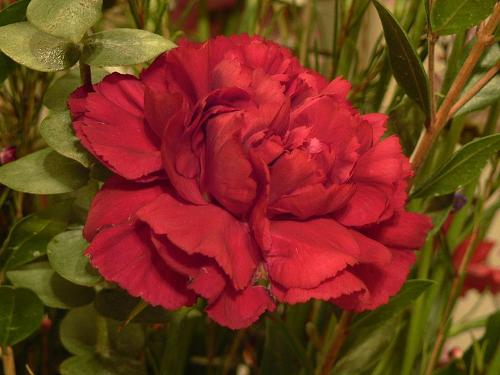 The national flower of Spain is the red carnationPhoto: Rick Kimpel CC 2.0 Generic no changes made
The national flower of Spain is the red carnationPhoto: Rick Kimpel CC 2.0 Generic no changes made
A striking feature is the common downy oak that grows in somewhat wetter places. The Pyrenees are home to about 150 unique species and the much smaller Sierra Nevada in the south has 60 unique species. Above the tree line in the various mountain areas, plants such as gentian, crocus, narcissus, sundew and orchids occur. Well-known places where many species of orchids occur are the mountain meadows of the Picos de Europa with about 40 species and the Serranía de Cuenca in the Sistema Ibérico. Spain's national flower is a red carnation.
The plateau has, among other things, a steppe-like flora with for example melde, lye herb and in general a mixture of the vegetation of the steppe regions, the Mediterranean region and the high mountains. In the northwest we find on the mountain slopes heaths with red heather, shrub heather and gorse species.
The steppe areas can be found in the Ebro Valley, the Castilla-La Mancha and the almost desert-like Cabo de Gata in Andalusia. These areas only show their fantastic richness of colors after rain showers.
The subtropical Canary Islands have quite large differences in vegetation, but cacti, low scrub, palm trees and pine trees (Pinus Canariensis) in the higher parts are quite common.
Animals
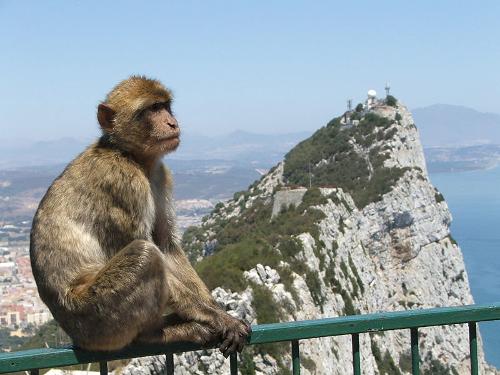 Barbary Macaque at the Rock of Gibraltar, SpainPhoto: AlexCurl CC 3.0 Unported no changes made
Barbary Macaque at the Rock of Gibraltar, SpainPhoto: AlexCurl CC 3.0 Unported no changes made
Spain's animal world is partly Southern Euro-Mediterranean in character with some African elements such as the chameleon, the genet cat and the Egyptian mongoose. The magot or Barbary macaque found on the rock of Gibraltar is a species of monkey that was probably introduced by humans.
The large mammals include brown bear, wolf, otter, lynx, wild cat, wild boar, fallow deer, red deer, roe deer, the very rare Spanish ibex and chamois. Some of these animals have become very rare and much attention is being given to the protection of some of them.
There are only a few dozen brown bears left in Spain, mainly in the Picos de Europa and the more westerly Cordillera Cantábrica. In the Pyrenees especially on the French side of the mountains. Although the hunting and killing of bears has been banned since 1973, their numbers are still declining.
About a thousand wolves still live in the northwestern mountain areas and a further number in the southwestern Meseta and the Sierra Morena.
It is better with the ibex, a mountain goat with long horns. Almost wiped out in 1900, the population has recovered and it is estimated that there are now about 70,000 specimens living in the Sierra de Gredos and Andalusia in particular.
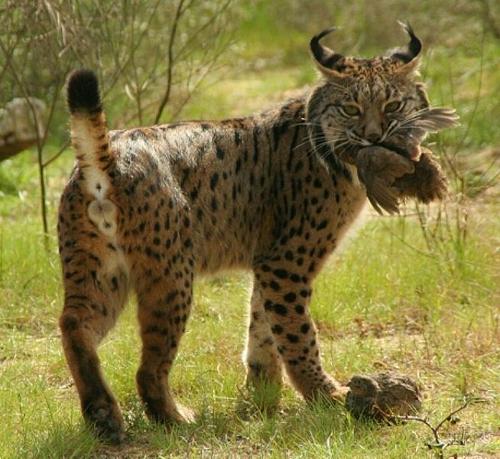 Iberian Lynx, SpainPhoto: http://www.lynxexsitu.es CC 3.0 Spain no changes made
Iberian Lynx, SpainPhoto: http://www.lynxexsitu.es CC 3.0 Spain no changes made
The Iberian lynx is a uniquely Spanish predator, smaller than its Northern European counterpart. In 2004, only 150 of these animals were left in two small colonies in Andalusia. In 2007 it became known that there are now about 250 lynxes and that 44 cubs were born in that year. Scientists determined that the animals are returning to their original habitat, north of Andalusia in Castilla-La Mancha.
The very rare monk seal is found on the coast of the Mediterranean Sea and the Gulf of Biscaje is an important gathering place for whales and dolphins. Most European butterflies can be seen in Spain. Furthermore twenty special bat species, four salamander species, the midwife toad, snakes and countless lizards. Venomous snakes are a viper species, the Montpellier snake and the Lataste's viper.
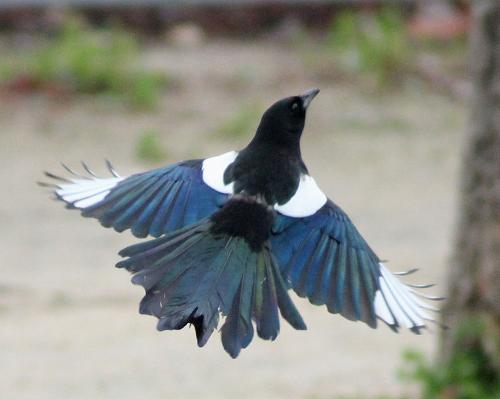 Blue magpie, SpainPhoto: Luis Garcia CC 3.0 Spain no changes made
Blue magpie, SpainPhoto: Luis Garcia CC 3.0 Spain no changes made
The bird world is very rich; the stork and a number of species of large birds of prey (golden eagle, imperial eagle, snake eagle) are still relatively common here and there. One of the most striking bird species is the blue magpie, which is found in central and southern Spain and is only found in China next to Portugal. An impressive sight is the great bearded vulture (quebrantahuesos = bone breaker because of the habit of throwing its prey on the rocks) which is found in the high Pyrenees and has been reintroduced in the Sierra de Cazorla. The population of black vultures is the largest in the world. Other scavengers and birds of prey are the griffon vulture, the Egyptian vulture, the kestrel, the buzzard, the sparrowhawk, and the red and black kite.
In the spring, Spain is very attractive for large groups of migratory birds, including the largest concentration of cranes in Europe. The world famous and very important Coto Doñana (officially: El Parque Natural Entorno de Doñana) is one of the largest bird sanctuaries in the world where more than 160 species breed annually, for example approx. 600,000 geese from Northern Europe, 3000 flamingo pairs and many coasts , water and marsh birds.
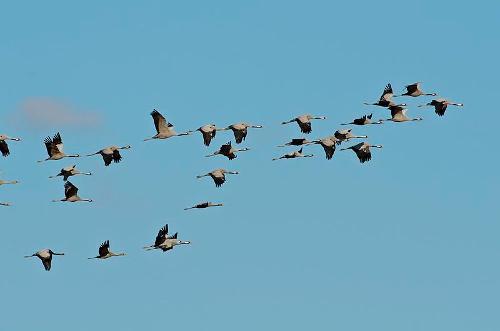 Cranes, SpainPhoto: Arturo de Frias Marques CC 3.0 Unported no changes made
Cranes, SpainPhoto: Arturo de Frias Marques CC 3.0 Unported no changes made
Other important coastal wetlands are Albufera de Valencia, the Ebro Delta and Aiguamolls de l'Empordà in Catalonia. Inland, thousands of ducks hibernate in Tablas de Daimiel, Castilla-La Mancha and Laguna de Gallocanta, Spain's largest natural lake, 50 kilometers south of Calatayud in Arágon. Laguna de Fuente de Piedra is the main breeding ground for about 13,000 flamingo pairs.
Two rare species are the great bustard and the capercaillie, both known for their beautiful courtship behavior. About 8,000 grand staircases live in Spain, more than in all other countries in Europe combined.
The most colorful birds include golden oriole, hoopoe and bee-eater. These birds are most common in the south of Spain.
In 1997 Spain had ten National Parks and 695 protected areas. In these areas there are thousands of species of plants and animals that cannot be found anywhere else (anymore) in Europe.
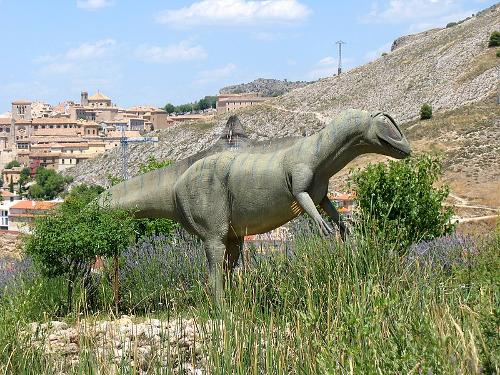 Model of a Concavenator corcovactus, SpainPhoto: PePeEfe CC 4.0 International no changes made
Model of a Concavenator corcovactus, SpainPhoto: PePeEfe CC 4.0 International no changes made
Paleontologists discovered a new dinosaur species in 2010: the Concavenator corcovatus. The four-meter-long predator lived on Earth 130 million years ago. The bones were found in the Los Hoyas plains of central Spain. At the time, it was a swamp area, comparable to the Florida Everglades.
Sources
Grabowski, J.F. / Spain
Lucent Books
Spain
Lonely Planet
CIA - World Factbook
BBC - Country Profiles
Copyright: Team The World of Info